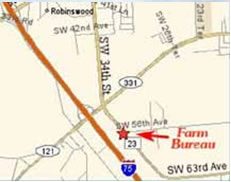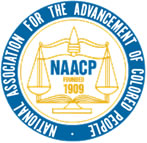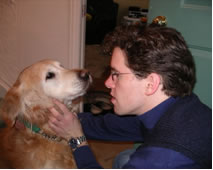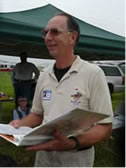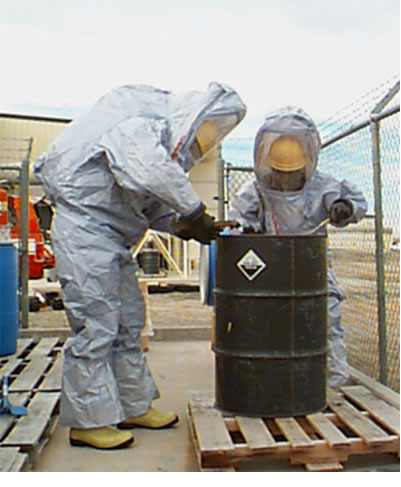
Vol. 3, No. 11, November 2007 |
 Printer-Friendly PDF Version Printer-Friendly PDF Version |
[top]
Through The Grapevine
David Perry and John Haven are not the only SART members who have completed
FEMA’s train-the-trainer program. In addition to being a National Wildfire
Coordination Group-trained and recognized Type 3 Plans Section Chief with years of experience in state-wide and national disaster
deployments, Martha Wagaman is an FEMA/FDEM-certified Advanced |
|||
|
ICS Instructor and a member of a
multi-agency (Fire, Law Enforcement, Public Health and
Emergency Management) training team! Wagaman notes that her group holds monthly I-300 and I-400 courses. They are open to all city, county and state emergency response and "infrastructure" agencies (power, transportation, medical, local government, key business leaders, etc.). “We have had attendees from as far away as Tennessee,” she says. Contact Dawn Wood, Training Coordinator, at the Emergency Management office in the Duval County EOC for information and registration:dawnwood@coj.net. |
||
|
Duval County Emergency Management is revising its Pet Friendly Special Needs Shelter protocols. Several disaster shelters have been designated as “Special Needs Shelters” designed and staffed to support citizens who need daily medical assistance or the support of health care professionals. Very often these citizens will refuse to evacuate without their companion pets. By providing for Pet Friendly SpNS facilities staffed with County Health Department
personnel, and pre-registering individuals with disabilities or health care needs, the
county can better serve their at-risk population during a disaster. Those citizens who
have pre-registered will be contacted during an evacuation to ensure that
transportation for both owner and pet are available if needed. Volunteers to assist
the disabled with pet care at these shelters are welcome. Contact Kathy Barnett, RN
(904-253-1026, Kathy_Barnett@doh.state.fl.us) for more information.
[top] |
Florida State NAACP Joins Florida SERT In a Memorandum of Understanding signed September 22, 2007 between
Craig Fugate as Director of the Florida Division of Emergency Management and Adora
Obi Nweze as President of the Florida State Conference of the NAACP, the NAACP has
become a standing member of SERT. Broadly speaking:
|
|||
|
|||||||
|
Question: Where can we have our dogs tested for leptospirosis? We suspect all of our dogs are infected, and have been giving them antibiotics and other medicine per directions from our local internal medicine veterinarian. I want to make sure however that the other dogs will be okay. So far none are showing signs of sickness, but all have blood and green stuff in their stools just like a pup that died. We have fenced off a small area and have been bleaching everything of course – before, during and after – perhaps a bit of over kill. |
Florida (352-392-2226 ext. 5717 levyj@vetmed.ufl.edu) leptospirosis “may be a re-
emerging disease in dogs. We used to think of it as a disease mostly restricted to
free-roaming and rural dogs, but now there are more suburban and urban infections
in pampered house dogs. Perhaps this is due to development in rural areas that
brings pets and people into closer contact with wildlife. |
“The clinical signs of leptospirosis are nonspecific and may
mimic other diseases. Therefore a thorough diagnostic
evaluation including hematology, serum chemistries,
urinalysis and fecal parasite testing should be completed on
sick dogs. If leptospirosis is suspected, serum should be
sent for leptospirosis serology at the time of illness and
again four weeks later. “There are now four-way leptospirosis vaccines available that are indicated for dogs at risk of infection. The vaccines protect against the most common strains, but not all strains. Leptospirosis vaccines may have a shorter duration of action, perhaps lasting less than a year in some animals, than most other vaccines. They are also associated with a higher rate of reactions than many other vaccines, but this is mostly in toy breeds. The new vaccine guidelines [from the American Animal Hospital Assn.] that we follow at UF-CVM are at: |
|
||
www.aahanet.org/PublicDocuments/VaccineGuidelines06Revised.pdf |
|||
NEFCART, the Northeast Counties Animal Resources
Team, has catalogued a large number of skilled personnel
and equipment resources that would be available for
animal/agriculture response during and after a
disaster. Resources include
chemical capture experts and their equipment, caging and transport equipment, and
trained shelter personnel for domestic and agricultural
animals, plus exotic animal rescue groups that deal with species as diverse as tigers, ostrich and koi. Resources/contact information should
be added to the FLSART website soon. In addition, NEFCART – |
|
- supports the
Technical Large
Animal Rescue
Course January 28-
31, 2008. The class
is open to individuals
from a cross-section
of disciplines in the
Northeast Florida
area: search and
rescue teams, county
animal control
officers,
veterinarians, equine
trainers/handlers,
county emergency
management/planners, and FDACS employees. Renowned equine handlers and technical large animal rescue experts Tomas and Rebecca Gimenez will conduct the four-day course.Class-
work provides technical understanding, and a hands-on portion allows the Gimenezes to demonstrate, and students |
|
||||
|
to exercise, rescue skills (including deep
water and night scenarios). Cost per participant is $150. Contact John Haven,
Director, UF-CVM for availability, location, and logistical details: havenj@vetmed.ufl.edu.
NEFCART general meetings are open to all interested individuals. The next meeting is scheduled for November 5th. For details please contact NEFCART chair, Kelly Cuppoletti at kcuppoletti@co.st-johns.fl.us (904) 824-5550. (Thanks to Martha Wagaman for this update.) |
|||||
[top]
|
Due to the overwhelming response and requests to register for the January 2008 “Technical Large Animal Rescue Course, ”an additional class is being formed for the early spring. Please contact Martha Wagaman at martha_wagaman@doh.state.fl.us as soon as possible to reserve space for yourself or your organization. The class size is capped at 30.
|
 |
|
Hurricane Westy came ashore in Tallahassee recently and most people didn’t notice! But Hurricane Westy was on a mission, to test the ability of the residents residing in the Independent Living section of Westminister Oaks and the administration and management team of the Nursing Home and Adult Congregrate Living Facility also located within Westminister Oaks to work together in planning and preparing for, responding to and recovering from a strong Category Two hurricane. |
|
The three-hour tabletop exercise provided 74 participants an opportunity to learn the importance of working together when disaster strikes. Participants worked within their neighborhood and workplace groups to coordinate activities such as neighborhood/business planning and preparedness, threat assessment, needs assessment and recovery. |
||
Hurricane Westy was developed and facilitated by
the Capital Area [Chapter of the American Red Cross,
Citizen Corps and Medical Reserve Corps], the City of Tallahassee, Fire Department, Leon County Health Department and the Leon
Sheriff’s Office Division of Emergency Management on Wednesday afternoon,
October 10th. |
 |
If your community would like to participate in a Disaster Tabletop Exercise please contact your local chapter of the American Red Cross by logging onto http://redcross.tallytown.com/chapters.html. [top] |
|
|
John Haven and Mary Ring e-mailed to let us know that the Hazardous Materials Training course recently hosted by the University of Florida’s College of Veterinary Medicine and instructed by Gainesville Fire & Rescue HAZMAT instructors had an impressive 42 attendees. The awareness-level introduction to HAZMAT course included both classroom instruction and a static display of GFR’s heavy response and tower trucks. Attendees included individuals from the College of Veterinary Medicine (faculty, staff and students), members of FDACS, USDA, recent applicants for the new Veterinary Corps program and members of SART (NEFCART, HSUS DART and Habitat for Horses).
|
|
|||||
[top]
 |
Florida SART member Rob Robison says that if you
are not familiar with the Best Friends Animal Society,
you can learn more about this organization by
contacting him at kat_ranch@peoplepc.com or
checking out their web site at www.bestfriends.org. |
| “Best Friends is working with you -- and with humane groups all across the country -- to bring about a time when there are No More Homeless Pets.” Best Friends operates a sanctuary in Utah’s Angel Canyon to house 1,500 homeless pets: dogs, cats, farm animals, horses, rabbits, birds and other animals. In addition it provides adoption, spay/neuter, and educational programs around the country; and publishes Best Friends, the nation's largest general-interest animal magazine. | |
| When we spoke by phone, the semi-retired Robison was searching for funding to travel to Mexico to work with animal rescue and recovery efforts following the severe storms and flooding in the state of Tabasco. Besides being a member of SART, Robison notes that he is a member of: HEART (the Hernando County Emergency Animal Response Team), HSUS’ DART, UAN EARS Crisis Response Team, Hernando CERT team, Best Friends Rapid Response Team and SAR team leader, and the Director of Kat Ranch Rescue (a private sanctuary for about 50 rescued animals). [As we “went to press” with this issue of the Sentinel, I received this note from Rob Robison: “If everything works out I will be leaving Thursday for Villahermosa, Mexico. |
|
|||
|
Just like after Katrina we will be deploying food and water teams in boats to get to the most animals possible as quickly as possible. With additional resources we intend to then rescue as many animals as we can. These animals have been stranded in the second floors and rooftops for days and they are hungry and dehydrated. The estimated numbers of companion pets in need exceeds 10,000 and livestock over 1,500,000!”] |
||||
[top]
About the SART SentinelEditor: Rick Sapp, PhD, Technical Writer, Florida Department of Agriculture & Consumer Services, Division of Animal Industry [rsa5@cox.net] Associate Editor: Joe Kight, State ESF-17 Coordinator, Florida Department of Agriculture & Consumer Services, Division of Animal Industry [kightj@doacs.state.fl.us] The SART SENTINEL is an E-mail newsletter prepared monthly by Rick Sapp and the members of the Florida State Agricultural Response Team. Past issues of the Sentinel are archived on the Florida SART Web Site, www.flsart.org. If you have a story or photo that you would like to have considered for publication in The SART SENTINEL, please contact the Editors. |
[top]


